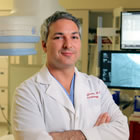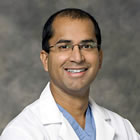 For interventional cardiologists in the Northeast, the next few months offer two important transradial training opportunities…on both sides of the Hudson River.
For interventional cardiologists in the Northeast, the next few months offer two important transradial training opportunities…on both sides of the Hudson River.
First off, on April 20, the Gagnon Cardiovascular Institute in Morristown, New Jersey has organized the Mid-Atlantic Radial Symposium 2013 (MARS2013), a follow-up to their successful premiere course last year.
According to Jordan Safirstein, MD, FACC, FSCAI, Director of Transradial Intervention at Morristown Medical Center:
Jordan Safirstein, MD
“This year’s Mid-Atlantic Radial Symposium will take our audience beyond the basics of transradial approach and into the complex world of intervention and LIVE CASES. We are extremely lucky to feature such an amazing faculty and offer it to you for free, thanks to our very generous sponsors! Our internationally renowned faculty include world authorities on Same Day PCI (Dr. Sunil Rao), radial access and hemostasis (Dr. Samir Pancholy), radial complications and complex cases (Dr. John Coppola), as well as high-volume radial operators with ample experience in both coronary and peripheral intervention, who have successfully transitioned their femoral labs into radial centers of excellence.”
Moving a few miles to the East, and two months later, the Cardiovascular Research Foundation (CRF) will hold its very first standalone course on the transradial approach on June 28-29: the NYCTRAC (TransRAdialCourse). Over the past few years, the annual TCT meetings, organized by CRF, have hosted increasingly well-attended symposia on the transradial approach. I have documented this growth, starting with the very first one in 2009, (see: “SRO at the Wrist Angioplasty Seminar — Transradial is Hot“) and continuing as audiences to these symposia grew from a hundred to a thousand (see: “SRO Times 5 for Transradial Symposium at TCT2011“). This growth parallels the interest in transradial in the U.S. and now, CRF is offering the NYCTRAC.
Co-Director of the CRF course, Ajay J. Kirtane, MD, SM, of NewYork-Presbyterian Hospital/Columbia University Medical Center, told Angioplasty.Org that the emphasis for the course is going to be hands-on technique:
Ajay J. Kirtane, MD
“Some of the people at CRF, myself, Philippe Généreux and friends of ours, Stéphane Rinfret from Quebec, we found that we had enthusiasm and energy to want to teach the technique and to make it a real practical-based course. Not so much debating the pros and cons and the science, but to really go through for U.S. operators the nuts and bolts of how you would not only plan to do radial in your lab, but how would you do it in an individual case and even have live cases as part of it. We’re fortunate because we were able to attract really, really good faculty. But it’ll still be a very practical course. It’s meant for folks to come and really see how you do the techniques.”
And when Dr. Kirtane says “really, really good faculty,” he’s not exaggerating. More than two dozen expert interventional cardiologists are listed as faculty, including Drs. Marty Leon and Gregg Stone, who created and run the TCT, along with transradial pioneers and practitioners such as Drs Tejas Patel, Olivier Bertrand, Martial Hamon, Ian Gilchrist, Mauricio Cohen, Jeff Moses and many more.
Both courses are listed on our Transradial Training Courses page, part of our special section devoted to the Transradial Approach which includes in-depth interviews with many of the faculty at both of these courses, the latest news and clinical trials and more about the wrist approach to angioplasty.
Back to the courses, Dr. Kirtane pointed out to me something important about learning this new technique:
“Many feel that for their own cath lab, they don’t really need to buy a whole new set of catheters, learn a whole new set of shapes, need to get new equipment and that sort of thing. We try to keep it simple. We tend to use the same type of catheters with slight modification that you’d use for a femoral case. Hydrophilic sheaths we do use, but most of the things we try to use are things that docs would already have at their disposal and already know how to use. I think that that sort of jump in learning is daunting to many people, who say, ‘Oh, I’ve gotta learn how to use single catheter technique for both left and right,’ and that sort of thing. I think the philosophy of the course will be, ‘look we can still keep it relatively simple and you’ll still be able to do this.'”
So Dr. Kirtane’s comment leads me to a quick aside.
Both of these, as well as most other courses in the transradial approach, receive industry support. But, unlike some of the bigger ticket items in interventional cardiology, like drug-eluting stents, or valves, or pharmaceuticals, or imaging equipment, the transradial approach really is just a technique that can be done pretty much with standard equipment that is currently stocked in the cath lab. Some device companies offer specialized sheaths, or guide wires, or pressure bands, or transradial kits, but these are modest in terms of a “revenue stream.” Obviously, sponsoring training isn’t totally altruistic because there is a “good will” component to offering such support, but aiding transradial education in the U.S. will help interventionalists expand their technique so that they can offer this more comfortable (and possibly safer and less expensive) option to their patients.
Just sayin’….
(…and, as to full disclosure, our Transradial Center is supported by an unrestricted education grant from Medtronic.)





